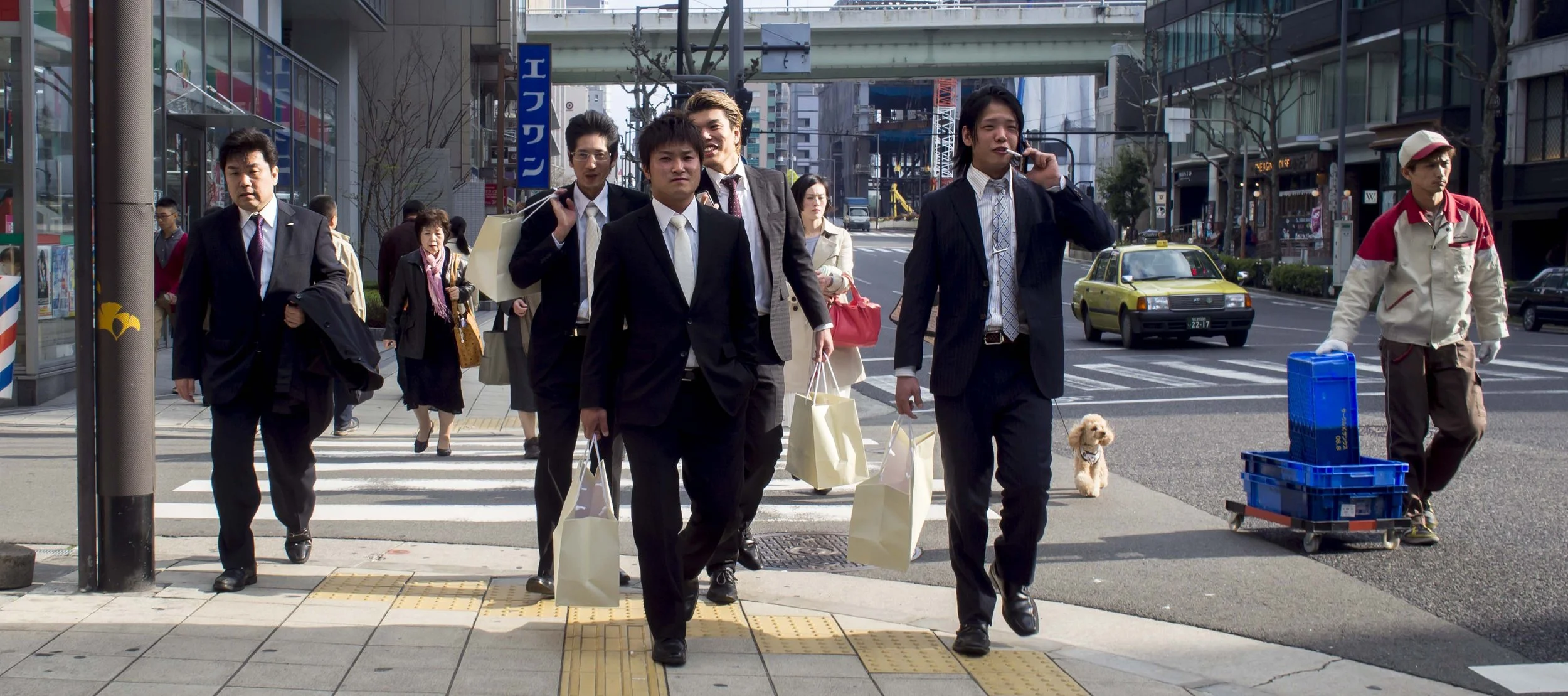Learning about cinematography has armed me with a better vernacular to understand and explain my street photography.
Terms like “blocking”, Mise-en-scene and storyboarding have allowed me to see that both share much in common, so much, that I feel it is possible to hone one skill set with equal benefit to the other.
A frozen action conveys a single mood, but would the cinematographer agree with this representation?
Mise-en-scene is literaly “setting the scene”. Cinematographers do this on two levels. They first identify the place, time and potential atmosphere, then “dress it” for the period or feel of the production. From here they apply many technical elements like lens features, filtering, angle and camera movements, then they introduce the final elements, the players.
The street photographer does much the same, just working with what they get and attempting to “sum-up” the scene with a single capture.
Not a cinematic shape (open gate?), but the other “true” shape, the square. A square movie? Interesting thought.
Blocking is the placement of the players and their props to convey (1) their place in the story, (2) their importance in the scene and (3) the subsequent flow of said scene. This is done with light, physical placement, movement, focus and sound, using camera angle and other elements for stronger effects, but the core of it all is Mise-en-scene and blocking.
Central placement makes the main, stronger character obvious, but the scene holds other elements. In a street scene we have the luxury of exploration, but the cinematographer needs to make these elements attract the viewer in the right order and at the right time or they are lost, fleeting moments.
I have always had a lean towards the magnificent elegance of the wider scene complimented with more intimate, tighter shots of individuals, which in many ways sums up my street photography.
Street photographers can only identify the scene, be patient and snap at the right time. The scene is played out in front of their eyes and then in the heads of their viewers.
What happenned, who is doing what and why?
Reservoir Dogs, Osaka style.
Luck, efficiency and patience play equal parts, but street shooters do have the advantage of only needing a single frame to tell the story.
Possibly the end of a walk through scene, the blue witches-hat gives us a visual anchor that replaces the womans blue dress as the highlight colour using the 60-30-10% colour rule, (60% primary grey-white, 30% supporting beige and 10% contrast or highlight blue).
Street photography is like cinematography, but without the control. The idea is to convey an idea of a place and/or people, using only what is on offer, making that work as able.
If cinematigraphy is the controlled flow of a moving scene, street photography is the momentary arrest of the same. Both are powerful, but potentially have very different results. Street photography conveys the story through careful inclusion and omission, cinematography does not have that luxury. A stills shooter on a movie set could very well tell a contradictory story to the cinematographer with a few well chosen images.
Setting the scene for either requires an authenticity, one that comes naturally with street shooting, because the shooter has only recognised, not “set” the scene.
The cinematographer sets natural spaces based on a falsehood, that then have to look natural.
Light, movement and placement. This could easily be a scene in a movie, but as a street shot it has added authenticity.
Cinematography and street photography are therefore often identical except for the pre-amble.
The Cinematographer recognises the potential of a found location, then manufactures an environment.
The street photographer recognises the potential of the found space and times their capture.
Same result, different amount of exerted control.
One of my favourites with a fleeting glance of the three element rule. Cinematically, this one would transition well to any of the three subjects, but this specific moment would likely be lost.
For me, the golden rule of street photography is the “three element” rule. I like to include, when I can, three active elements in a frame. This is not always possible or even relevant, but if I can, I do.
A simple composition, lacking the three element rule.
Probably better a little squarer, but I cannot find the original file, this is better blocked for street with three elements and could be used cinematically to transfer our attention from one, to another, to another subject, following the inward and outward movement of specific players.
I guess the lot of the street photographer is as challenging as the cinematographer, just different.
The beauty of the two learned in tandem is the lessons from one do indeed help the other.
The street photographer side of me is always looking for that “cinematic” frame and I guess I always have been without knowing it (drawing on my memory bank of old photos and I now realise old movies).
My newly dicoverred cinematographer side is now looking to create effectively a moving street image.











